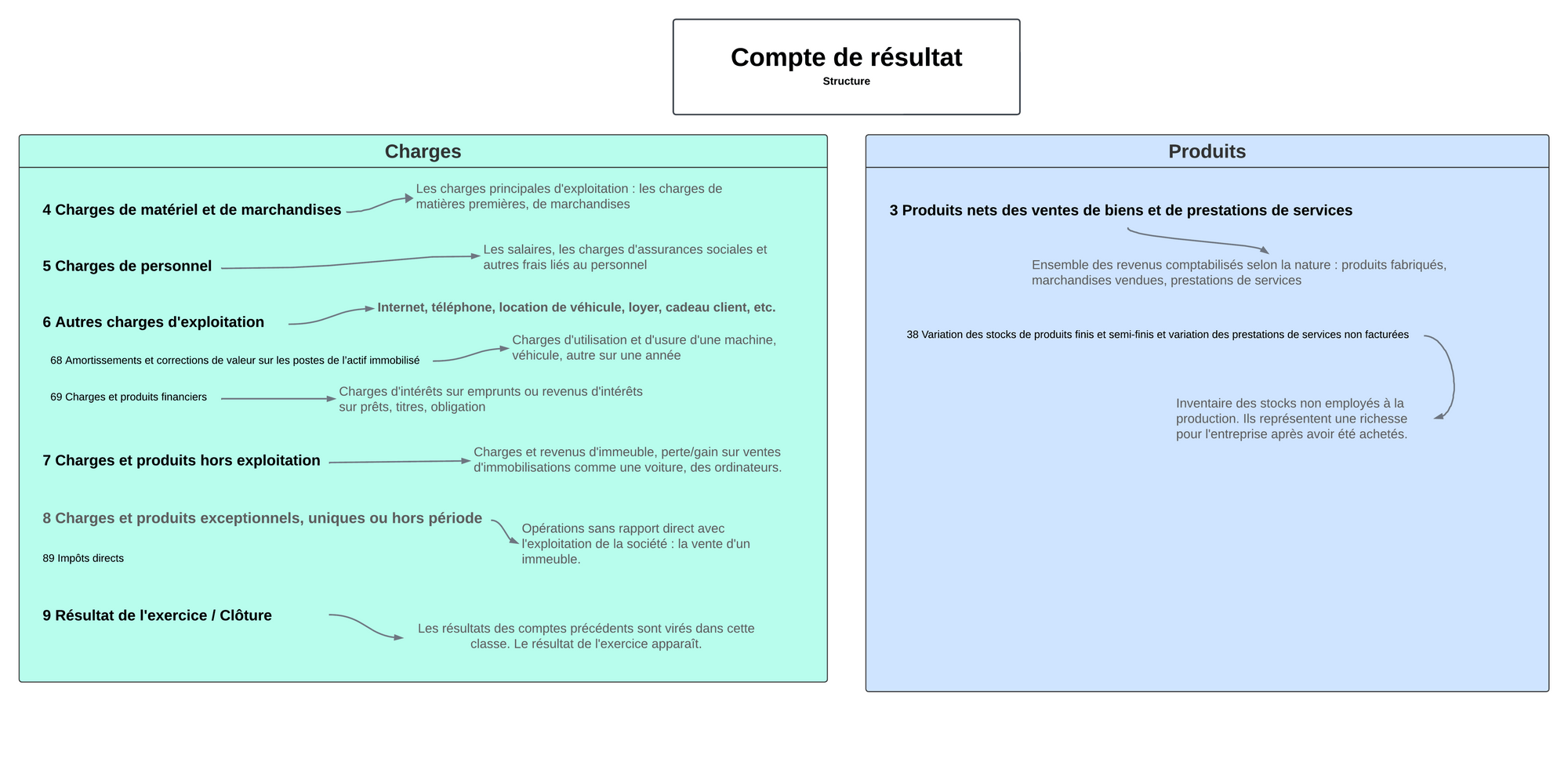The different classes of the income statement
According to the law, there are two ways to publish an income statement: by function or by nature. We will focus here on the income statement by nature, which is divided into several classes:
Class 3: Net income from sales of goods and services
Income represents the company's sales according to their nature. For example, sales of goods (account 3200) and sales of services (account 3400). This class also includes changes in inventories of finished and semi-finished products and unbilled services.
Class 4: Material expenses
The main expenses are the "mandatory" costs that the company incurs to produce. For example, a restaurant buys food, a carpenter buys wood, a transportation company buys fuel. Otherwise, its commercial role cannot be fulfilled.
Class 5: Personnel expenses
All personnel expenses are included in this class: gross salary, social charges, reimbursement fees, other personnel expenses such as the end-of-year meal offered.
Class 6: Other operating expenses
Other operating expenses include secondary expenses that are not directly related to the production of the company's goods or services. Expenses for premises, maintenance, repairs, replacements, vehicle and transportation expenses. This class also includes depreciation and value adjustments on fixed asset items, as well as the financial result (account 69). In most SMEs, financial expenses exceed financial income, which justifies classifying the financial result as an operating expense.
Class 7: Non-operating income and expenses
This part of the chart of accounts includes the classification of ancillary activities defined as activities not directly related to operations but impacting the calculation of net income. These ancillary activities include the result of real estate activities.
Class 8: Exceptional, one-time or out-of-period income and expenses
Exceptional income and expenses arise from random and unpredictable events. As such, they are not part of operations. For example, the gain or loss on the sale of a fixed asset, a significant loss on a customer receivable, a burglary.
Class 9: Closing
When the company's results are published, the class 9 accounts are used to collect the balances of all the aforementioned accounts in order to show a profit or loss. Thus, the accountant closes the accounts and transfers the amounts to the 9XXX accounts.
